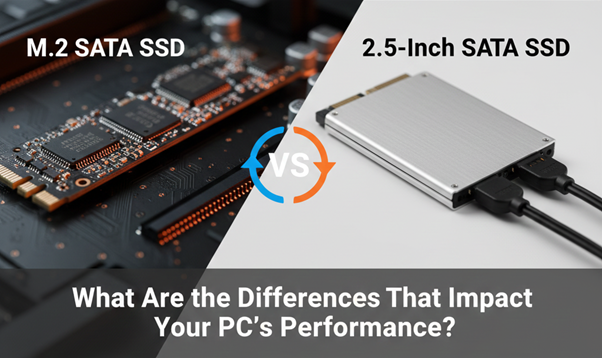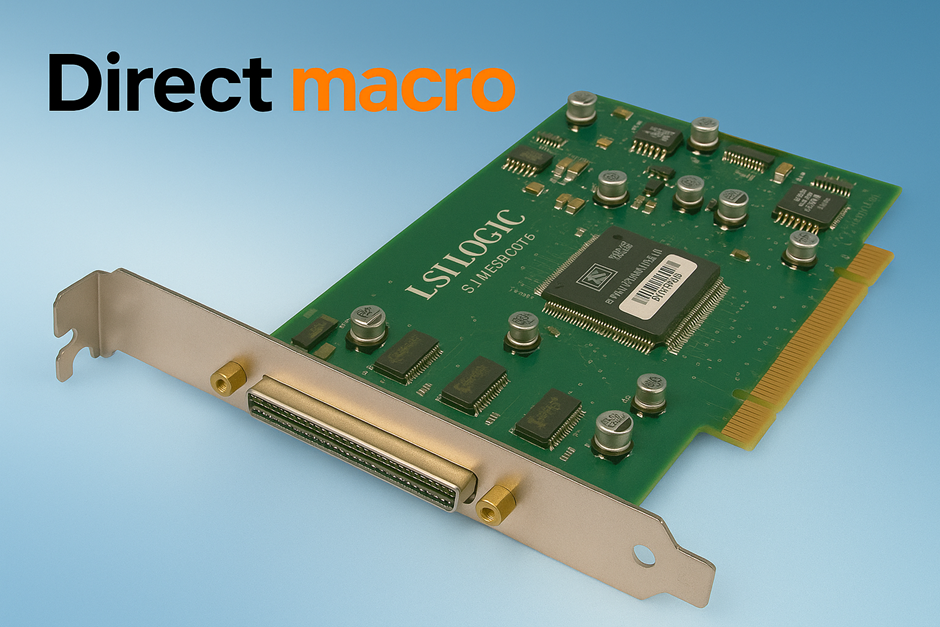The Most Common Network Devices Explained: Types, Uses & Benefits
In a world where the digital realm is ever-changing, networking gear has gone from optional to absolutely vital. We’re not just talking tech-heavy businesses here; even our homes are hubs needing the most common networking devices to keep the data flowing. With this easy-to-follow yet rich guide, we’ll be unearthing various types of network devices, discussing the uses of networking devices, and spotlighting some surprising benefits they bring to our daily grind.
Don’t underestimate these networking accessories; they’re the glue that holds our interconnected lives together. Whether you’re a casual browser or running a corporate server farm, these devices pull more than their weight. Ready for a deep dive? Strap in because we’re about to take a ride to know different types of network devices through networking devices examples, examining the nuts and bolts that keep us so seamlessly linked.
We’ll spotlight examples of networking devices that spin our interconnected world, giving you the lowdown on what makes each tick. So, gear up for an eye-opening trek through the intricate maze of today’s networking technology.
Network Devices: The Fundamentals
At their core, network devices—often dubbed as network accessories or simply network equipments—are tangible gizmos engineered to streamline the dialogue between diverse gadgets within a network framework. These hardware units don’t just act as data routers or switches; they also play roles in packet forwarding and ensuring cybersecurity. This shows the importance of networking devices in every setup, whether big or small.
Networking Devices and Their Functions
All networking device will definitely serve these primary functions:
- Enable device-to-device connectivity and data transmission
- Enable secure and effective network connectivity
- Improve network performance and traffic flow by enabling secure connectivity
- Enforce threat prevention and access control to provide network security
- Make network configuration and management more straightforward
- Increase network coverage and get around signal constraints
Now, let’s move towards various types of networking equipment.
The Diverse Types of Network Devices
When it comes to devices in a network, one size definitely doesn’t fit all. The market is brimming with an assortment of equipment, each tailored to fulfill specific needs and applications. In this segment, we’re set to explore the different networking devices types, putting a spotlight on their unique traits, practical applications, and the advantages they bring to the table.

Hub Network Device
Once upon a time, hub network devices were the go-to solution for linking multiple gadgets; they used to and still fall into the elemental types of internetworking devices. Operating at the fundamental physical layer of the OSI model, these devices relied on a straightforward broadcast method for data distribution. When a hub gets data from one device, it blasts that information to every connected device. While easy to grasp, this old-school approach isn’t the most resourceful, leading to the hub’s gradual decline in today’s more advanced network setups.
Key Uses:
- Simplicity: One of the prime advantages of using a hub is its straightforward setup, making it a breeze for networking newbies.
- Cost-Effectiveness: Hubs generally come with a lower price tag than other networking devices, offering a budget-friendly option.
- Compatibility: Their basic functionality allows hubs to integrate seamlessly with older hardware, giving them a niche in legacy systems.
Switches
Switches are the Einsteins of the networking world, especially when you compare them to their simpler cousins, the hubs. Rather than indiscriminately broadcasting data to every device on the network, switches are smart enough to direct that data right where it needs to go. How do they pull this off? By getting to know the MAC addresses of all connected devices and keeping track of them in a handy-dandy table. This focused approach drastically cuts down on data traffic that’s just floating around, boosting the network’s overall efficiency and making switches stand out as prime network devices examples.
Key Uses:
- Targeted Data Transmission: One of the biggest perks of switches is their ability to send data only to the designated device, enhancing network security and efficiency.
- Reduced Network Congestion: By minimizing unnecessary data broadcasts, switches help lower data traffic, making for a faster and more reliable network.
- Scalability: As your network grows, switches can quickly adapt, offering a more flexible and expandable solution than primary hubs.
Bridges
Bridges act like the go-between in the world of device networking. What’s their main job? Seamlessly link two or more network segments, making them function like part of one big, happy network. By taking in, dissecting, and forwarding data frames between these components, bridges aren’t just functional but essential. Indeed, they are the common network devices used to connect networks, whether fusing segments of a single LAN or making two separate LANs shake hands.
Key Uses:
- Network Expansion: One of the significant uses of bridges is to expand the reach of a network, essentially making smaller segments part of a larger, more cohesive network.
- Improved Performance: By separating network segments and only allowing necessary data to pass through, bridges can enhance the performance and reliability of a network.
- Interconnectivity: Bridges excel at joining different types of networks or network segments, making them versatile tools in any networking toolbox.
Routers
Routers are probably the first things that come to mind when you wonder what devices are used in networking. These workhorses link up a local network—think your home Wi-Fi or office setup—with an external network, such as the Internet. They’re like the traffic cops of data, using IP addresses to guide data packets through the most efficient routes. Plus, they have built-in security features, making them a staple in today’s complex networking environments.
Key Uses:
- Gateway to the Internet: One of the primary functions of routers is to connect local networks to external ones, effectively serving as your gateway to the online world.
- Intelligent Routing: By analyzing data paths, routers ensure data packets reach their destination via the most efficient route, optimizing network performance.
- Enhanced Security: Routers often come with built-in firewalls and other security features, making them critical for protecting a network from external threats.
Modems
Modems might feel like a blast from the past, but they’ve been the backbone of internet connectivity for years. They were among the most common network devices for quite a while before technology started sprinting ahead. These gadgets handle connecting devices to the Internet and usually play nice with a router to get the job done. The name “modem” is a nod to its primary functions—modulating and demodulating digital and analog signals so data can hop along telephone lines.
Key Uses:
- Internet Access: The primary yet vital role of modems is to provide internet connectivity, serving as the initial point of contact between your local network and the Internet.
- Signal Conversion: Modems are skilled in the art of transforming digital signals from your computer into analog signals that can travel over telephone or cable lines and vice versa.
- Compatibility: Given their long standing history, modems can work well with various internet services and are often easily integrated into existing network setups.
Access Points
Wireless Access Points, often abbreviated as WAPs, may not hog the limelight, but their role is critical in the world of networking. Access points highlight the importance of network devices and connect wireless devices and wired networks. They’re the ones that let your smartphone or laptop tap into a wired network through Wi-Fi or other wireless standards. Deploy multiple WAPs, and you’ve got an extended, robust wireless network covering a broad area.
Key Uses:
- Wireless Freedom: WAPs enable devices to connect to wired networks without being physically tethered, offering the convenience of mobility within a network.
- Range Extension: By using multiple access points, you can dramatically increase the reach of your wireless network, ensuring stable connectivity even in larger spaces.
- Seamless Integration: Access Points can be effortlessly added to existing wired networks, making them highly adaptable and scalable solutions.
Network Interface Cards (NICs)
While Network Interface Cards, or NICs for short, might not get name-dropped at your average dinner party, they’re a crucial type of network device. These overlooked helpers confirm your device, whether a big desktop or a slim smartphone, can connect to the network you need. Whether a wired Ethernet card in a workstation or a wireless card in your laptop, NICs ensure you get connected and stay that way.
Key Uses:
- Device Connectivity: NICs are fundamental in enabling devices to hook up to a network, making them indispensable for internet access and local networking.
- Versatility: NICs come in various forms to suit different devices and needs, such as wired options for desktop PCs and wireless ones for laptops and mobile gadgets.
- Data Transfer Efficiency: Manufacturers engineer these cards to manage data traffic effectively, ensuring a stable and speedy connection for data-intensive tasks.
Network Security Devices
Rounding out our exploration of network device types, let’s recognize the unsung champions of network safety: Network Security Devices. Though they may be the last on this list, their significance is anything but minimal. Firewalls and Intrusion Detection Systems (IDS) guard your network, scrutinizing incoming and outgoing data based on pre-set security rules. They are the sturdy barricade between your trusted internal network and any shady, untrustworthy external networks.
Key Uses:
- Threat Mitigation: Network security devices are your first line of defense against external threats, reducing the risk of unauthorized access or data breaches.
- Controlled Data Flow: By monitoring incoming and outgoing data, these devices help maintain the integrity and confidentiality of your network’s information.
- Compliance: For businesses, these devices can be crucial for meeting regulatory requirements related to data protection and network security.
These are just a few of the various networking devices that keep our digital world running smoothly. Each has its own particular job in moving, guiding, and protecting the information that fuels our online activities.
The Cumulative Benefits of Different Network Devices
In today’s digital landscape, networking devices are essential, more like lifelines than mere tech. They simplify complex tasks, from effortless data sharing to seamless resource utilization like printing remotely. All told these devices are indispensable gears in the machinery of modern communication. Here are some of the key benefits:
Smooth Data Flow
When talking about the uses of network devices, routers and switches truly stand out. Think of them as the traffic managers on our data highways. They excel at making sure your data moves efficiently. They use intelligent algorithms and protocols to find the quickest routes, eliminating annoying lags. This becomes invaluable in extensive networks that span across great distances.
Online Connectivity
In the digital age, connectivity is more than a luxury—it’s a necessity. That’s where our example of network devices like modems, routers, and access points come into play. Acting as your gateway to the Internet, they help you tap into cloud-based resources, from apps to other services. It’s like holding the keys to an endless library of digital treasures.
Digital Architects
In the grand scheme of things, network devices and their uses go beyond just connecting point A to point B. Take hubs, switches, and repeaters, for instance. They’re the architects that expand the blueprint of your network, letting more gadgets jump onto the digital bandwagon. From linking different floors in a tall building to connecting whole city blocks, these devices help your network grow, turning it into an extensive, connected system.
Grid Security
When it comes to network security, types of network appliances like managed switches and routers are the silent sentinels. They’re programmed to keep out intruders, safeguard your data, and even sniff out and halt specific cyber attacks. They’re like digital bouncers, ensuring only the correct data gets through.
Smooth Problem-Solving
When employing self-correcting types of networking devices such as switches, an issue in one part of the network doesn’t throw a wrench in the entire system. These switches keep each connection separate and distinct, making it much easier to zero in on a problem and get it sorted.
Tailored Bandwidth Distribution
Unlike the old-school hubs that divvy bandwidth without much thought, smart devices like switches and routers have a knack for allocating bandwidth based on what’s needed. This guarantees your devices can communicate smoothly without any annoying delays or slowdowns.
Cost-Effective
When it comes to cost, networking devices hit a home run. They let multiple users share things like printers, storage space, and internet connections, slashing the need for each person to have their own. That’s one of many textbook examples of network devices making your life and wallet much happier.
FAQs
What internal device does a computer use to connect to a wired or a wireless network?
A computer uses a network interface card (NIC) to connect to a wired or wireless network.
What are the common network devices?
Common networking devices include hubs, switches, bridges, routers, modems, and access points.
How do switches and bridges learn where devices are located?
Switches and bridges learn where devices are located by analyzing the data packets that come through them. They remember the device’s location and use this information to direct traffic efficiently.
What is the purpose of a network device?
The purpose of a network device is to facilitate communication between different devices on a network. This includes data transmission, routing, switching, and providing security.
Final Thoughts
Network gadgets are the work horses keeping us all interconnected. They span from basic hubs to high-end switches, each playing a unique part in making our digital exchanges smooth and seamless. So whether you’re uploading your latest project or just browsing the web, remember that a robust lineup of network devices is working tirelessly in the background to make it happen. It’s an interlinked world out there.
Ready to dive deeper into the world of networking? Explore more and stay updated to leverage the power of network devices in your daily life.
Do you need advice on buying or selling hardware? Fill out the form and we will return.

Sales & Support
(855) 483-7810
We respond within 48 hours on all weekdays
Opening hours
Monday to thursday: 08.30-16.30
Friday: 08.30-15.30








